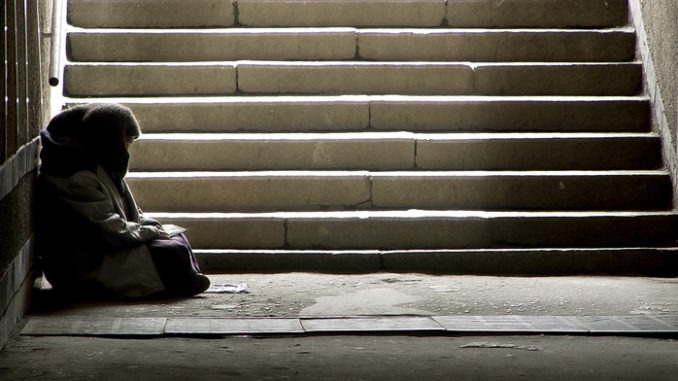
Practice Business explores how one of the UKs most vulnerable demographics, the homeless, often fall through the cracks in primary care. This guide to increasing accessibility for homeless people in your own practice aims to debunk myths around their rights and to help you make steps towards more inclusive healthcare
Homeless people are one of the most vulnerable demographics. They often have mental and physical health problems – sometimes caused or exacerbated by living on the streets or, perhaps, pre-existing problems which may have played a role in their homelessness. Homeless people have a life expectancy of 47 – a figure massively below the norm. Therefore, it is vital we establish clearer pathways to NHS health care and primary care for homeless patients; the NHS is, after all, free at the point of access regardless of occupation, status or wealth.
Unfortunately, many homeless people are turned away from GP surgeries because they don’t have a fixed abode, proof of address or proof of their immigration status. Many practices don’t know that homeless people have a right to a GP, regardless of such issues. Homeless people may also struggle to access GP surgeries due to fear of hostility, previous bad experiences and not knowing of their right to NHS health care.
The good news, however, is that practice managers are in the perfect position to re-evaluate and transform their practices’ responses to the homeless. Effectively caring for the homeless has positive repercussions for your practice, too, as your CQC ratings will improve if you can demonstrate you are making primary care accessible to vulnerable demographics.
So what can you do to make your practice safer, more welcoming and more accessible to homeless people?
Increase your own awareness
Data by Research Link shows that 18% of homeless people have been refused registration at a GP or dental practice in the last 12 months. Reasons for refusal include antisocial behaviour and missed appointments, yet many homeless people report they were refused access due to lack of fixed address. Homeless people can use a temporary address to register with a GP instead. This could be a friend’s house, a day centre, or they could actually use the practice’s own address.
These facts about accessibility should form the core of your practice’s homelessness strategy.
Train your staff
Once you are aware of homeless people’s rights to a GP, perhaps the most important thing you can do is arrange training for other practice staff. It is incredibly important that front of house employees, such as receptionists, know the right of a homeless person to register despite not having a fixed abode.
“GP receptionists are usually the first people that patients come into contact with at a practice, and can be champions for the most vulnerable members of our society,” Dr Adrian McLachlan, a Lambeth GP and Clinical Lead for Healthy London Partnership’s London Homeless Health Programme says.
Pathway, a homelessness charity, has produced a training video, slides and a quiz to introduce receptionists to current regulatory guidance around homeless patients. They have also worked with the CQC to produce simple best practice guidelines for tackling homelessness, all of which can be found here.
Run homelessness initiatives in practice
- You could evaluate whether having a designated clinic for homeless people would make access easier for these patients.
- You could introduce double appointments for homeless patients so that their, often complex, mental and physical health needs have the time to be thoroughly evaluated and addressed by practice clinicians.
- Make sure homeless patients are made aware that they can book appointments in the most convenient way for them, whether this be by ‘phone, online or in person at the practice.
- Similar to dementia champions, you can make an employee a ‘homelessness expert’ in your practice. This means you will have allocated someone to stay on top of the latest regulatory guidance and to research innovative ways to improve patient access for the local homelessness demographic. This expert could, for example, choose to form links with local homelessness charities.
Link with local charities
For example, the charity Groundswell, in London, has produced My right to healthcare cards to hand out to homeless people which inform them of their right to a GP. Such initiatives help reach out to the homeless demographic and can also provide homeless people with the address and contact details of the local practices they may wish to register at.
Refer or signpost patients to local homelessness services
Some areas have designated homelessness services for homeless patients. If it is in the best interest of the patient, and has been agreed with them, they can be referred on.
Make your practice safe for vulnerable patients
Unfortunately, the general public are not always aware of a homeless person’s rights to the same healthcare they receive. For this reason, homeless people may avoid GP practices because of hostile reactions they experienced, or fear they may experience, in waiting rooms. Alternatively, homeless people have been refused registration due to antisocial behaviour in the waiting room.
Allocating an optional alternative waiting area for these patients may help abate their fears or may reduce the likelihood of hostile interactions between patients in your practice.
Ultimately, good access to NHS primary care can be a lifeline for homeless patients. Making some of these changes may drastically improve the quality of life of the homeless in your local area, whilst also facilitating a smoother-running practice and adherence to NHS guidelines.
For further information or guidance, visit:


Be the first to comment